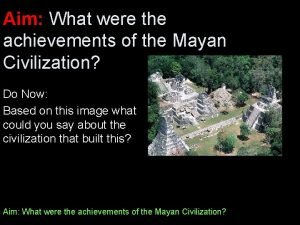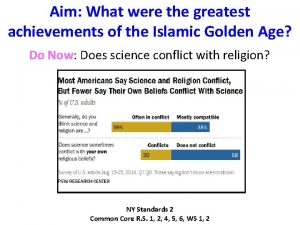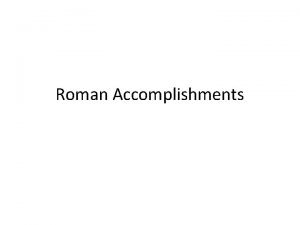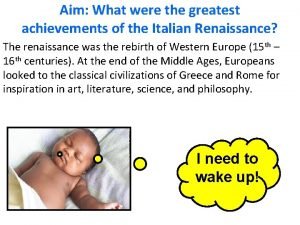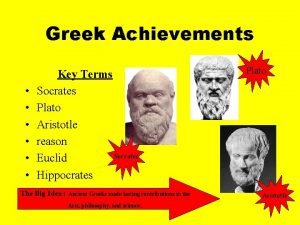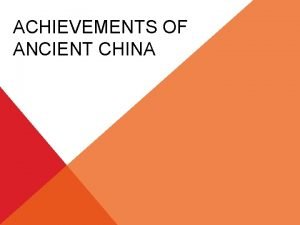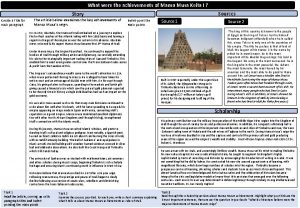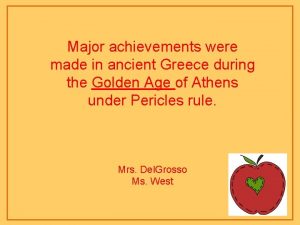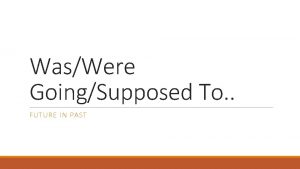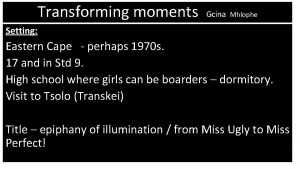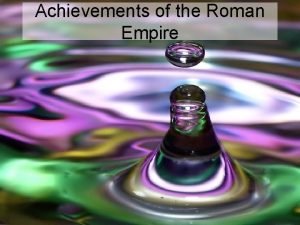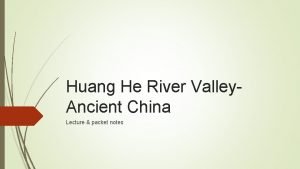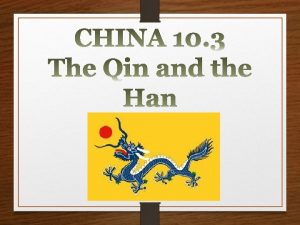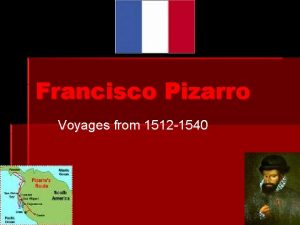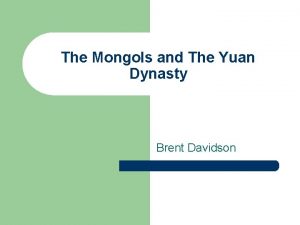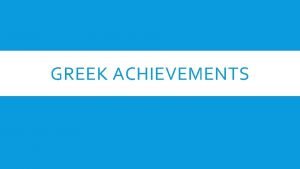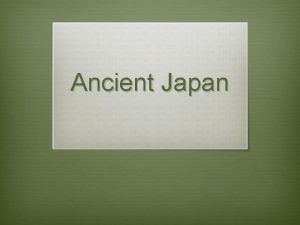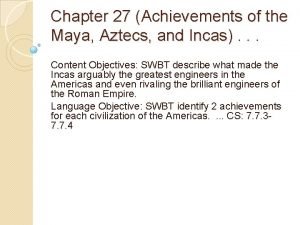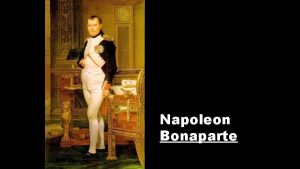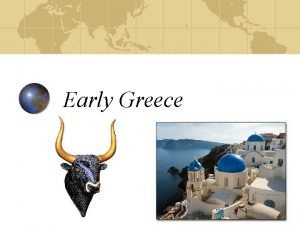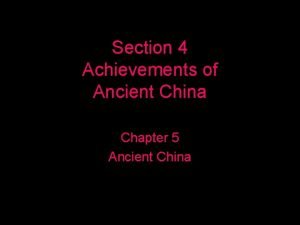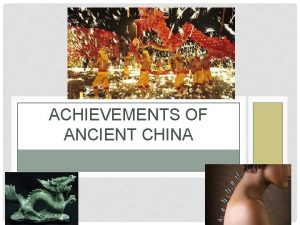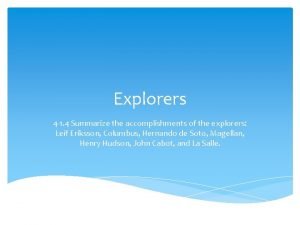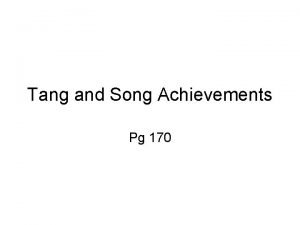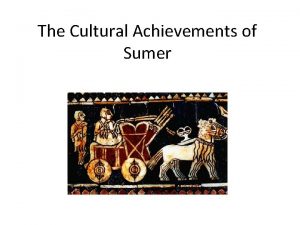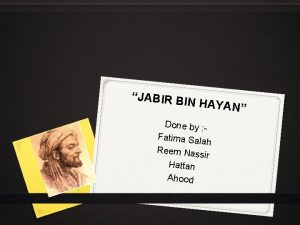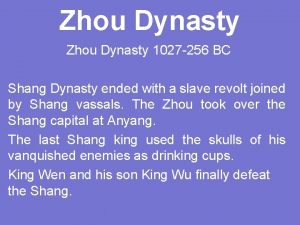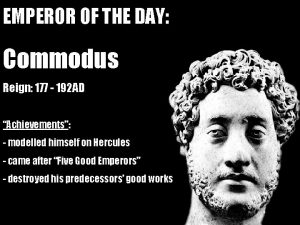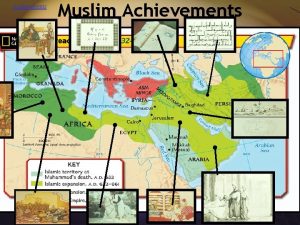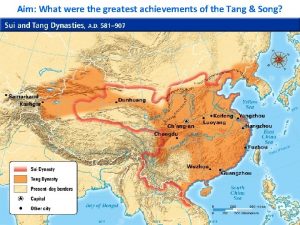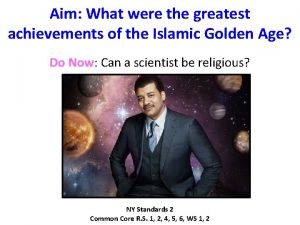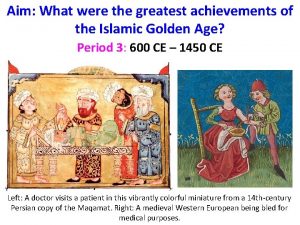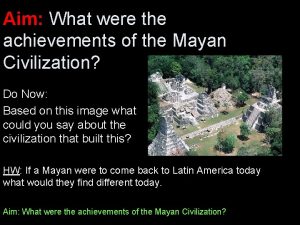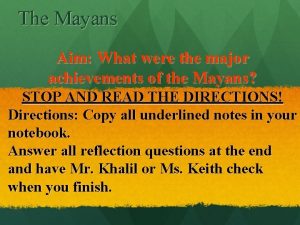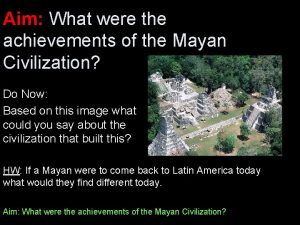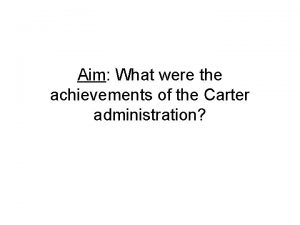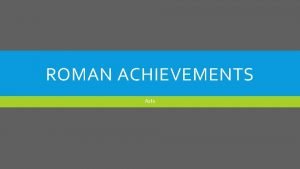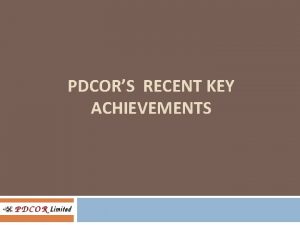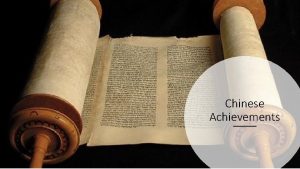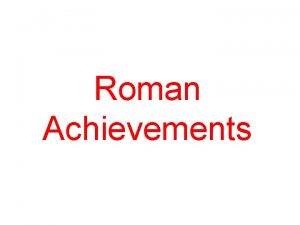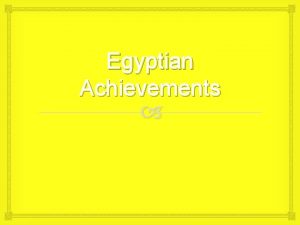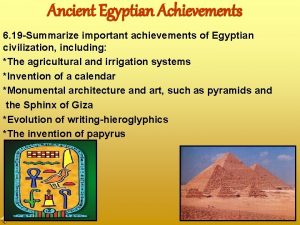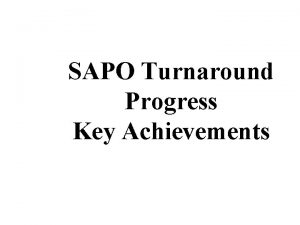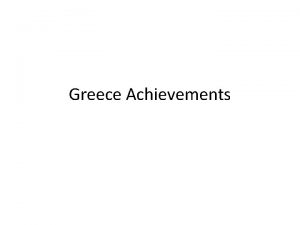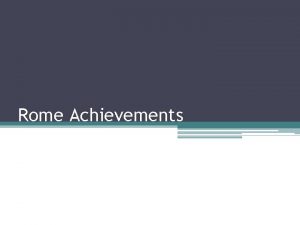Aim What were the greatest achievements of the




































- Slides: 36

Aim: What were the greatest achievements of the Italian Renaissance? Periods 3 – 4 The renaissance was the rebirth of Western Europe. At the end of the Middle Ages, Europeans looked to the classical civilizations of Greece and Rome for inspiration in art, literature, science, and philosophy. I need to wake up!

II Why was a Renaissance necessary? In the classical civilizations of Greece and Rome, learning was a virtue. Both Greece and Rome achieved a Golden Age in the arts, science, and philosophy. After the Western Roman Empire fell in 476 CE, Western Europe entered the Middle Ages. Feudalism replaced a strong, centralized government. Manorialism replaced a strong economy. Trade was limited. Most people were illiterate except for the clergy. Life largely centered on the Church. Medical and scientific knowledge was poor, and warfare was common. A Renaissance was absolutely necessary!

III How did the Renaissance begin? The renaissance began in the Italian city-state of Florence. 1. Ancient Roman ruins were a constant reminder of Rome’s former Golden Age. 2. Florence and Venice had never stopped trading with the Byzantine Empire or Muslim Arabs during the Middle Ages. 3. The Medici family were wealthy Florentine bankers. They used their wealth to finance beautiful sculptures, paintings, and buildings. 4. Gutenberg invented the printing press in 1445, allowing for the faster spread of ideas. Maria de Medici

The Italian City-States During the Renaissance

The Medici and the Renaissance The city of Florence, like a number of Italian city-states, came to power through conquest and commerce. Ardingo de' Medici became the head of the Florentine merchant guild in the 1280 s elevation of other Medici to Florence's ruling council, the Signoria, over the next few centuries. Medici political clout grew even more through their financial acumen as bankers. Founded in 1397, the Medici Bank quickly expanded and opened up branches as far away as England main financial institution of the papacy. With a ready source of capital, the Medici began trading spices, silk, and fruit. The early 15 th century saw the advance of the Medici into the highest ranks of Florentine government. Lorenzo de' Medici ruled Florence 1469– 1492. His success as a politician enabled Lorenzo to gain influence with the papacy, which had relied on the Medici Bank for many years. Giovanni, Lorenzo's son, became a cardinal and then Pope Leo X. Michelangelo, who had found a patron in Lorenzo, later found one in Pope Leo, under whose patronage he began work on the Medici Chapel.

The Medici Continued… While known for their incredible rise in Florentine politics, the Medici are equally well known as patrons of the arts. Without patronage, most artists could not find work, and thus had a difficult time supporting themselves. While patronage gave artists a livelihood, it also garnered the patron prestige. Works of art, especially those on public display, gave fame to artist and patron alike. Medici money backed some of the brightest luminaries of Renaissance art, like Donatello, famous for his bronze statue of David, and Michelangelo, who worked for the Medici off and on during much of his career. Michelangelo had even attended an art academy set up by Lorenzo in the Medici gardens near the Piazza San Marco. It was Lorenzo that gave Michelangelo access to the classical statuary in his garden. Humanists too benefited from the Medici. Both Cosimo and Lorenzo helped scholars locate and acquire ancient and medieval manuscripts. A Platonic school under Marsilio Ficino, a library at the monastery of San Marco, and manuscript production were all Medici-sponsored projects. http: //www. themedicifamily. com/

Cosimo de Medici Lorenzo de Medici

IV Humanism was a philosophy that grew out of the Renaissance. Humanists believed that humans are rational and moral beings. ü Humanists studied classical texts (ancient Greek and Roman) ü Humanists believed in the importance of a well-rounded education, including knowledge of the arts, science, history, and philosophy. ü Focus on secular (worldly) rather than solely religious matters “The intellectuals of antiquity, in contrast to the Christians, were relatively unconcerned about the supernatural world and the eternal destiny of the soul. They were primarily interested in a happy, adequate, and efficient life here on earth. Hellenic philosophy was designed to teach man how to live successfully rather than how to die with the assurance of ultimate salvation. ” Kreis, Stevens. 2000. http: //www. historyguide. org/intellect/humanism. html

Humanism Continued… Petrarch is considered to be the “Father of Humanism”. “Let me not pass over in silence the more obvious pleasures: to devote oneself to reading and writing… to read what our forerunners have written and to write what later generations may wish to read, to pay to posterity the debt which we cannot pay to the dead for the gift of their writings… to dig them out if they have been buried in the ruins of time and to hand them down to our grandchildren as objects of veneration…”

V Renaissance Art vs. Medieval Art Renaissance Art Religious in theme Some Renaissance art was religious in theme, but often would be painted in a classical style (similar to ancient Greek or Roman art). Flat (2 -D), abstract. Used perspective (an art technique that creates the illusion of 3 -D, by making distant objects appear smaller) People were fully clothed. Lack of detail. Realistic, detailed. Nudes and portraits of individuals became common.

VI Italian Renaissance Art A) Leonardo da Vinci (1452 – 1519) 1. Painter, sculptor, engineer, and inventor. 2. Dissected corpses to learn about human anatomy (he secretly dug them up). Above is a sketch from one of his notebooks. On the bottom left is a sketch for a flying machine.

Leonardo da Vinci… Mona Lisa, 15 th Century Some art historians believe that it was the portrait of Francesco del Giacondo’s wife, a Florentine noble.

Leonardo da Vinci … The Last Supper, 1498

vertical Last Supper Perspective horizontal

Leonardo da Vinci … Vetruvian Man, 1492 Vetruvian Man shows us how Leonardo understood the proportions of the human body. “Each separate part was a simple fraction of the whole. For example, the head measured from the forehead to the chin was exactly one tenth of the total height, and the outstretched arms were always as wide as the body was tall. ” – bbc. com

Donatello 1386 - 1466 The David by Donatello was the first free form sculpture since Ancient Rome!

Michelangelo 1475 - 1564 Michelangelo was a painter, sculptor, and engineer. Between 1508 and 1512, under the patronage of Pope Julius II, Michelangelo painted the Sistine Chapel ceiling. Michelangelo and his assistants used wooden scaffolds that allowed them to stand upright and reach above their heads. Michelangelo himself designed the unique system of platforms, which were attached to the walls with brackets. He complained (perhaps not fully serious? ) to his friend “I’ve already grown a goiter from this torture, ”

Michelangelo Continued… The Pieta, 1499

Michelangelo Continued… The David, 1504 Michelangelo’s David was displayed in the largest piazza in Florence. “It took the voice away from statues both ancient and modern” – Vassari, Michelangelo’s biographer

Michelangelo Continued… David, 1504

Michelangelo Continued… Sistine Chapel, Vatican 1508 - 1512 New popes are elected in the Sistine Chapel!

Sistine Chapel Details

Sistine Chapel Details

Italian Renaissance Art Continued… D) Raphael (1483 – 1520) Self Portrait, 1506

Raphael (1483 – 1520) Continued… The School of Athens (1510 – 1511)

The School of Athens Details Plato and Aristotle were 2 of the most influential classical philosophers in history. Plato is pointing to the heavens, which symbolizes his belief that reality lies beyond the physical world. Aristotle’s hand is towards the earth, as he disagreed with Plato (his teacher).

School of Athens Details Ptolemy (he has his back to us on the lower right), holds a sphere of the earth, next to him is Zoroaster who holds a celestial sphere. Ptolemy tried to mathematically explain the movements of the planets. His theory remained the authority until Copernicus in the 16 th century. Raphael included a self-portrait of himself, standing on Ptolemy’s right.

VII Italian Renaissance Architecture Filippo Brunelleschi 1377 – 1436 Brunelleschi engineered the largest masonry dome in the world for the Cathedral of Florence.



Italian Renaissance Architecture Continued… C) St. Peter’s Basilica, Rome Designed by Michelangelo, dome completed 1590

St. Peter’s Basilica Interior

VIII Italian Renaissance Literature Machiavelli was a Florentine diplomat and humanist (1469 – 1527), wrote The Prince, a guide on how to rule. He raised ethical questions about government and its use of power. “COMING now to the other qualities mentioned above, I say that every prince ought to desire to be considered clement (moderate) and not cruel. Nevertheless he ought to take care not to misuse this clemency. Cesare Borgia was considered cruel; notwithstanding, his cruelty reconciled the Romagna, unified it, and restored it to peace and loyalty. And if this be rightly considered, he will be seen to have been much more merciful than the Florentine people, who, to avoid a reputation for cruelty, permitted Pistoia to be destroyed… Nevertheless he ought to… proceed in a temperate manner with prudence and humanity. . . Upon this a question arises: whether it be better to be loved than feared or feared

Machiavelli The Prince Continued… It may be answered that one should wish to be both, but, because it is difficult to unite them in one person, is much safer to be feared than loved, when, of the two, either must be dispensed with. Because this is to be asserted in general of men, that they are ungrateful, fickle, false, cowardly, covetous, and as long as you succeed they are yours entirely; they will offer you their blood, property, life and children, as is said above, when the need is far distant; but when it approaches they turn against you. And that prince who, relying entirely on their promises, has neglected other precautions, is ruined; because friendships that are obtained by payments, and not by greatness or nobility of mind, may indeed be earned, but they are not secured, and in time of need cannot be relied upon; and men have less scruple in offending one who is beloved than one who is feared, for love is preserved by the link of obligation which, owing to the baseness of men, is broken at every opportunity for their advantage; but fear preserves you by a dread of punishment which never fails. ”

Summary 1. Why/how did the Renaissance start in Italy? How influential were the Medici in this process? 2. Choose any 2 works of Italian Renaissance art or architecture. Describe how each reflects the values of humanism. *Describe details! 3. Read the excerpt of Machiavelli’s The Prince. What is his advice? Is there any possible bias that may have influenced his advice? Do you agree with his advice?

Key Vocabulary ü Brunelleschi’s Dome ü Raphael (The School of Athens) ü Donatello (The David) ü Renaissance ü Humanism ü Leonardo da Vinci (Mona ü St. Peter’s Basilica Lisa, Last Supper, Vetruvian Man) ü Machiavelli (The Prince) ü Medici Family ü Michelangelo (The David, The Pieta, Sistine Chapel)
 What are some achievements of the maya
What are some achievements of the maya What are the key achievements from the islamic golden age
What are the key achievements from the islamic golden age Rome's greatest achievements
Rome's greatest achievements Renaissance vs medieval
Renaissance vs medieval Achievements of plato
Achievements of plato What were the major achievements of the shang dynasty
What were the major achievements of the shang dynasty What were mansa musa's most important achievements
What were mansa musa's most important achievements Pericles accomplishments
Pericles accomplishments Was/were going to
Was/were going to Transforming moments questions
Transforming moments questions Achievements of roman empire
Achievements of roman empire Huang he river valley
Huang he river valley Han wudi achievements
Han wudi achievements Olivia sadkowska
Olivia sadkowska Francisco pizarro map of exploration
Francisco pizarro map of exploration Yuan dynasty accomplishments
Yuan dynasty accomplishments Greek achievements in art
Greek achievements in art Achievements of namami gange project
Achievements of namami gange project Prince henry the navigator accomplishments
Prince henry the navigator accomplishments Rntcp
Rntcp Japanese achievements
Japanese achievements Ramses
Ramses Maya achievements
Maya achievements Napoleon bonaparte achievements timeline
Napoleon bonaparte achievements timeline Minoans achievements
Minoans achievements Aztec intellectual achievements
Aztec intellectual achievements Han dynasty achievements
Han dynasty achievements Bill gates achievements and awards
Bill gates achievements and awards Week of peace things fall apart
Week of peace things fall apart Han dynasty achievements
Han dynasty achievements Accomplishments of magellan
Accomplishments of magellan Pg 170
Pg 170 Achievements of the safavid empire
Achievements of the safavid empire Achievements of sumer
Achievements of sumer Jabir ibn hayyan achievements
Jabir ibn hayyan achievements Zhou dynasty achievements
Zhou dynasty achievements Magic emperor 192
Magic emperor 192
